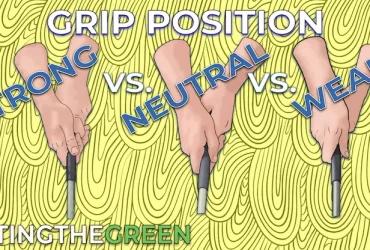How Do You Become a Pro Golfer?

It is a dream for many golf enthusiasts – to become a professional golfer! But, how do you it? What credentials do you need? And what are you likely to get paid for playing golf? Before we get ahead of ourselves, let’s have a look at what being a pro golfer is all about.
To begin with, being a pro golfer does not necessarily mean you play golf for a living. What it does mean is you are a certified member of the PGA – the Professional Golfers Association – and being so can lead to a variety of potential jobs.
Of course, you could become a professional golfer, and set out to play the game for money. Before you do this – and chuck in your job – consider how many professional golfers there are playing the PGA Tour. Official statistics reckon there are 80million golfers across the world. Of these, 245 play The Tour. So, your chances of becoming an actual pro player are very slim.
But let’s not stop there; your PGA Membership opens up a world of potential golf-related employment. There are many golf clubs around, and each needs a management team to keep the course and club in running order. Most in these positions – from Club Superintendent to General Manager – are usually PGA Pro Golfers.
Many clubs employ a Golf Pro to tutor other players, and perhaps a couple of players beneath the club pro. So there are jobs out there for you if you have your heart set on working with golf.
But, your ultimate aim is still to play golf professionally, and for many people it is! Why shouldn’t you give it a go?
Let’s talk about what you need to do to become a PGA Pro, and then we’ll have a look at some more criteria that need to be considered.
Contents
The Steps to Becoming a Pro
The PGA is a worldwide organisation overseeing golfing professionals in many countries, and each country follows very similar requirements for becoming a pro. There are certain criteria you need to meet – we’ll talk in a little more detail about ability in a moment – to be accepted by the PGA, so let’s have a look at these.
First you need to pay the set fees – you can find these at the PGA website – once you have completed all the other entry requirements, so we recommend that you take a close look at what it is going to cost should you pass, and budget accordingly. If you are intent on joining, you need to set aside this fee – it will depend on the country you are in – so that you are ready to pay to finalise your membership.
To become a member, you also have to complete coursework – it’s not all taking place on the greens – in three parts that need some serious revision. These will involve a variety of golf-related exercises, technical and otherwise, that prove you are suitable for membership.
The coursework is not easy, but if you are an avid golfer with experience and are willing to delve a little deeper into the game and its technicalities, you should not only find it interesting, but also enlightening.
For some players the requirement is that you have a golf-related job before you apply to become a pro. This could be anything from a greenkeeper to a caddy.
However, there are also some university bursaries that can help bring students on who are golfing fans, and these are also worth looking at.
In addition to further tests, the major part of becoming a golf pro is displaying you ability over 36 holes. This is the PGA Player Ability Test, and it involves completing the 36 holes in one day, and meeting or surpassing a certain score. This brings us nicely onto the next section!
How Good Do You Have to Be to Become a Pro?
Let’s cut to the chase: you have to be very good to become a pro. Quite simply, you have to be among the very best few hundred golfers, and that is not going to be easy. Nor is it impossible, as there are pros out there, and there are new pros coming onto the tour all the time.
We’re talking in this section about playing golf as a professional, rather than qualifying and becoming a teacher. This way, we can show you just how much work goes into becoming a top player.
So, a question: what’s your handicap? If you’re a player with a good deal of experience – say you’ve played some amateur tournaments and so on – you might have a very low handicap, or you may even be a scratch golfer, one who has a zero handicap.
You think that you’re ready to turn pro with a scratch handicap? You’ll find you’re a long way out of your depth!
This is why there are so few genuine pro golf players in the world. You might be a great club player, but unless you’ve been playing off – at the very least – +4 for a while, you’re not going to cut it on the Tour. Many players have a +6 handicap when they start playing pro golf, and that’s a tall order for even the best amateur players.
Look at a few of the big names: Phil Mickelson is +5.2; Paul Casey is +6; Tiger Woods in his heyday was +7.9! Now not all pro golfers have such handicaps, but you’ll be hard pushed to find one lower than +4.
Further advice is that an amateur player should be below par in half of the tournaments they play and, when playing on a championship course, three over par should be your highest score. If you can’t meet all of these, you’re not going to make the cut, quite simply. If you can, then now might be the time to think about playing professionally!

How Much Do Pro Golfers Get Paid?
Let’s say you have all the talent, experience and credentials to become a professional player, and you have passed the routines that allow you to become a PGA Pro. What can you expect to earn? We’ll hang back for a moment and talk about the various different ways of playing golf for money, before we talk about those that play on the Tour.
The best way forward is to begin playing in the Minor League tournaments. These are developmental tournaments held to bring on pros who are looking to move up to the major tournaments. The Nationwide Tour is one, and others include the National Golf Association Tour and the eGolf Tour. In the former, the Nationwide Tour, earnings average per annum will be around $17000.
The top player in a recent year netted more the $400,000 but bear in mind the tail ender took home less than $2000.
One thing you have to consider is that pro golfers are not paid a salary. Go pro, and you are relying on successful tournaments to earn you a living, and it is not always easy with competition rife! Also, pro golfers must pay their own expenses in the way of lodgings, travel, entry fees, food and daily living, all of which is up-front expense.
Assuming you are good enough – and work hard enough – to reach the top echelons of professional golf, what can you expect to bring home? Recent figures from the PGA Tour show that a median earnings figure of around $600,000 is perfectly possible.
The top players will take home over $6million, but it all depends on how many tournaments you compete in, and how successful you are.
A poor season could mean very little earnings once your expenses have been sorted. It is fair to say, however, that prize money in golf is quite impressive – 45 tournaments on the PGA tour equals a great number of opportunities – and someone has to win, so it could be you!
You can expect to earn an easy $600,000 a year just for competing on tour.
How Much Does it Cost to Be a Pro Golfer?
In the section above we talked about expenses, and the fact that pro golfers earn only from the money paid out by tournaments. To give you an idea of what it costs to be a pro golfer, we’re going to look at an example of a player setting out on one of the mini-tours, which is where you will likely begin.
First, the player has to take part in what is known as Qualifying School. This is where players play through stages to be accepted on one of the mini tours, and the fee for the school is around $3000, so that’s the first expense to consider. If you don’t get through and you want to try again, you have to pay again, so you need to be at your best at this stage. So, let’s assume you get through, what’s next?
Next is to choose the mini tour, so we’ll use some averages here. You need to play in a good number of tournaments to stand any chance of making money, and usually a mini tour consists of around 15 tournaments over 30 weeks, so that’s our starting point. What’s the cost of entering each tournament? This can vary, and may be anywhere between $200 and $900, so let’s assume an average of $500 per tournament.
Take a break to add things up here, and we already have a running total of around $10,500, and that’s just to enter the tour and get through qualifying school.
Now what else do we have to consider? Travel is a major factor, as tournaments can be a long way apart. For the sake of this exercise, we’ll assume that flights and travel to and from each course cost around the $250 mark – which is a fair guess – so that’s another $3750 added on. Then you need hotel expenses, and even staying at the cheapest is going to cost you around $1500 at the very least, so we’ll call it that.
In addition to all of that, you have to live! Frugal you might be, but you’re still going to rack up $1000 a month with ease, so over 8 months – say – that’s $8000.
- Qualifying ($3,000)
- Tournament Fees ($7,500)
- Travel Costs ($3,750)
- Living Expenses ($8,000)
Total: $22,250!
Now, you could cut that down by staying on friend’s couches where possible, by getting to and fro by bus, or by eating less, but you need to be fit, healthy and on top of your game at all times. We’re also assuming that you get practise time for free, which is not always the case.
One last thing: the pay for just making the cut at one of these tournaments usually weighs in at around $1500, which is exactly break even if you make the cut at each tournament! Prize money comes on top of that.
So, it’s not cheap, but many people do it – a few hundred each year and growing in number – and there’s no reason you can’t be among them.
Can You Become a Pro Golfer at Any Age?
There are no age restrictions on becoming a pro golfer, but the standards required to play at professional level are so high that you need to amass a great deal of experience before you decide to go pro. As we have seen above, even our rudimentary example of a golfer joining the mini tour is not cheap, so it has to be something you are committed to and dedicated to in every way.
Statistics show that the average age of golfers on the PGA tour is around 35, and that most turn pro at about 30, with many years of experience playing beforehand, usually from a very young age. So, if you’re in your 20’s and just starting, you are probably too late.
If you’ve been playing since you were a child and are in your 20’s, racking up amateur tournaments and with a consistently improving handicap, you’re a prime candidate.

Why Would a Golfer Not Turn Pro?
We think we’ve answered this question quite well in the sections above. A pro golfer is taking a big risk in believing they have the talent, dedication and skill to become professional.
There is no job security – make a few mistakes and miss the cut, and that weeks expenses are gone – and if you have a family, it is something that both partners need to be committed to.
You might consider other options, including perhaps becoming a course pro and earning money from appearances, tutoring and advice, or even taking up a position in a club.
Bear in mind that the main reason golfers don’t turn pro is because, quite frankly, they know they are not good enough, and that applies to some of the best golfers you will play against in your lifetime.
Conclusion
If you are a very talented golfer, the right age with a +3 or more handicap and a consistent playing average, then there is no reason professional golf should not appeal. The few who make it beyond the first stages can become very successful indeed, but it is not a decision to take lightly.
If you are successful, you can enjoy an exciting career and earn some very decent money, so consider your game and keep improving, and then make that decision when you know the time is right.



